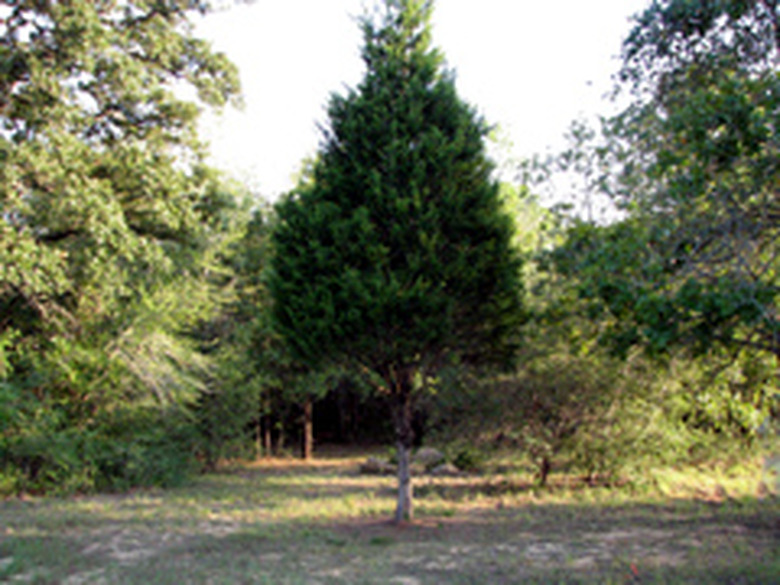How To Prune Eastern Redcedar
Things Needed
- Pruning tool
- Safety glasses
- Garden gloves
Tip
Begin pruning an eastern red cedar when the tree is around 5 years of age. Cedar trees need no other care other than occasional pruning. Cedar trees never recover from a major incident that breaks the main center branch or "leader," such as a lightning strike or high wind damage, so in these cases removal of the tree is recommended.
Warning
Removal of more than half of the green growth from an eastern red cedar may kill the tree. Wear safety glasses and gloves when cutting eastern red cedar trees because limbs are hard, rough and heavy with thorny outgrowths. Never cut trees around power lines. Seek professional help if a tree is interfering with power lines.
The eastern red cedar (Juniperus virginiana) is a tough evergreen tree that grows best from east Texas to Florida and north to Canada. The wood is used for lining closets and chests due to its ability to repel moths and other insects. Pyramidal when young, it's difficult to find two mature trees that look the same. The eastern red cedar is very adaptable in its native range and can grow to 100 feet, making it an appropriate tree for dense shade or windbreaking.
How to Prune an Eastern Red Cedar
Step 1
Stand back 50 feet from tree to get an idea of where to trim and how much. Eastern red cedar trees have a natural shape that needs no improvement. You only need to cut the lower limbs away for access around the base of the tree.
- The eastern red cedar (Juniperus virginiana) is a tough evergreen tree that grows best from east Texas to Florida and north to Canada.
- The eastern red cedar is very adaptable in its native range and can grow to 100 feet, making it an appropriate tree for dense shade or windbreaking.
Step 2
Cut the lowest branches first, then branches that restrict access to larger branches. Step back after every cut and observe the shape of the tree before removing the next branch.
Step 3
Cut larger limbs to the "collar," where they meet the trunk. Cutting limbs flush or even with the trunk will invite disease and delay the healing process.
Step 4
Trim low-hanging branches up to a point where the branch is growing upward for a natural shape.
Step 5
Remove cut limbs and debris. Eastern red cedar wood is tough and can interfere with the operation of some lawn equipment.
- Cut the lowest branches first, then branches that restrict access to larger branches.
- Trim low-hanging branches up to a point where the branch is growing upward for a natural shape.
